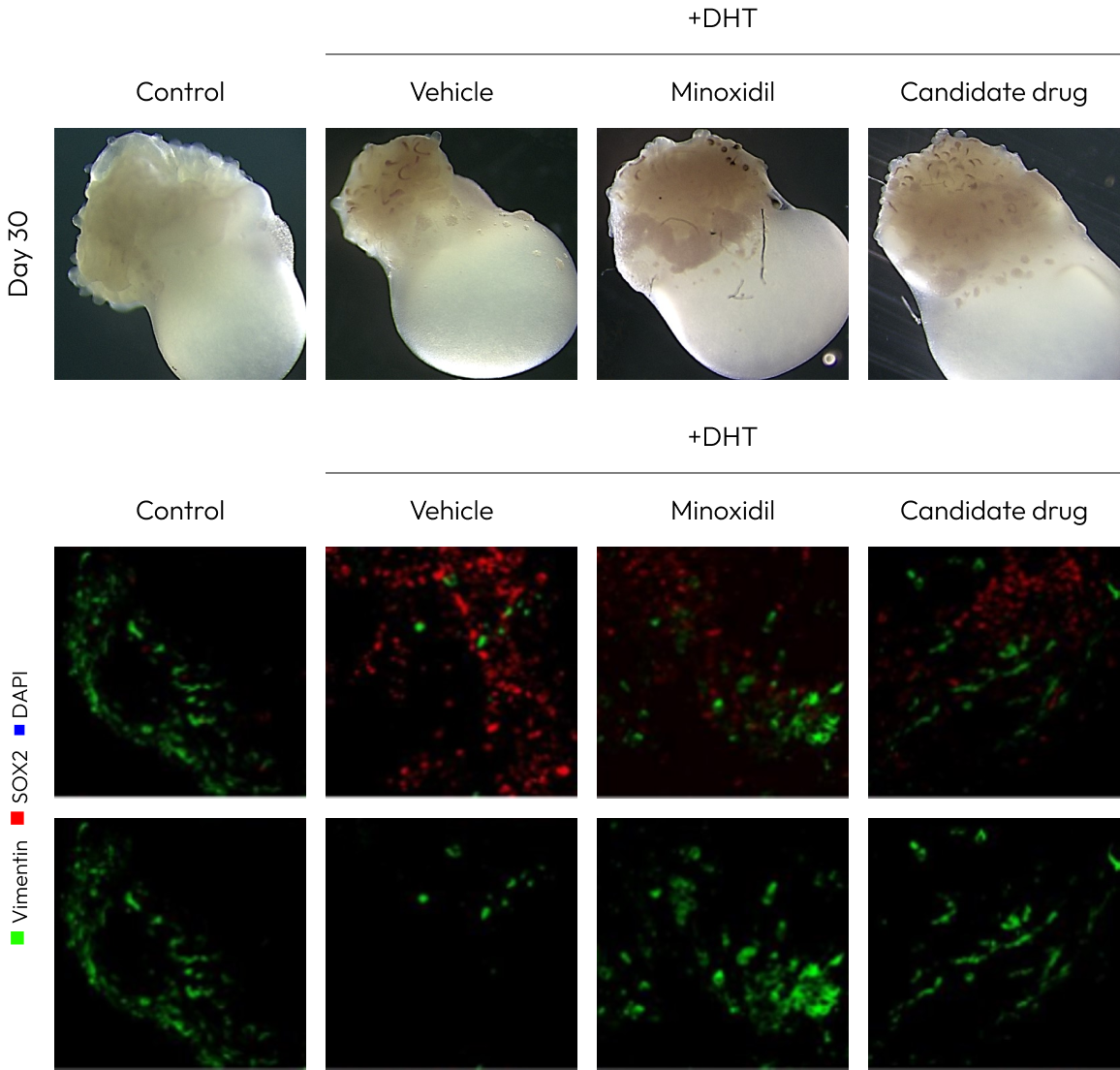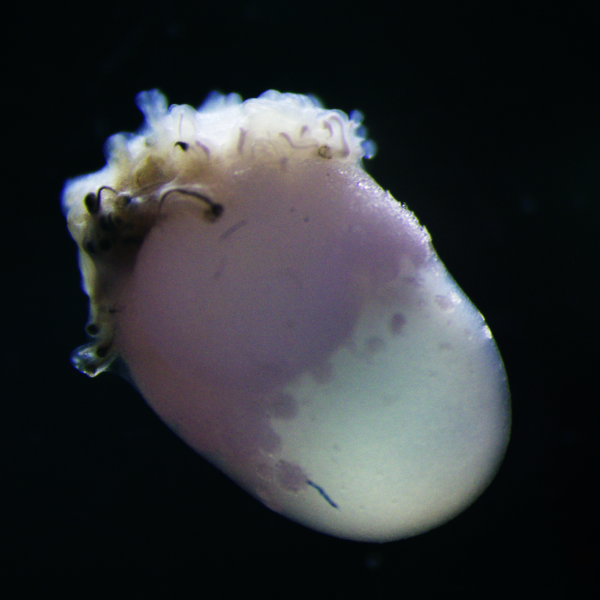
Price | 3189€+ Login to see price |
Organism | Human |
Product Type | Organoid |
Tissue | Intestinal tissue, iPSC |
Disease | – |
Applications
Toxicity
Organoid Based
Cosmetic (Efficacy)
Anti-Aging
Anti-Inflammation
Anti-Oxidant
Anti-Hair Loss
Hair Growth


Our skin organoids can be observed in a mature form with the epidermal layer, dermal layer, and subcutaneous tissue that appear in actual skin structure.
It is also composed of various cells such as fibroblasts, melanocytes, hair follicle-related cells, and adipocytes.
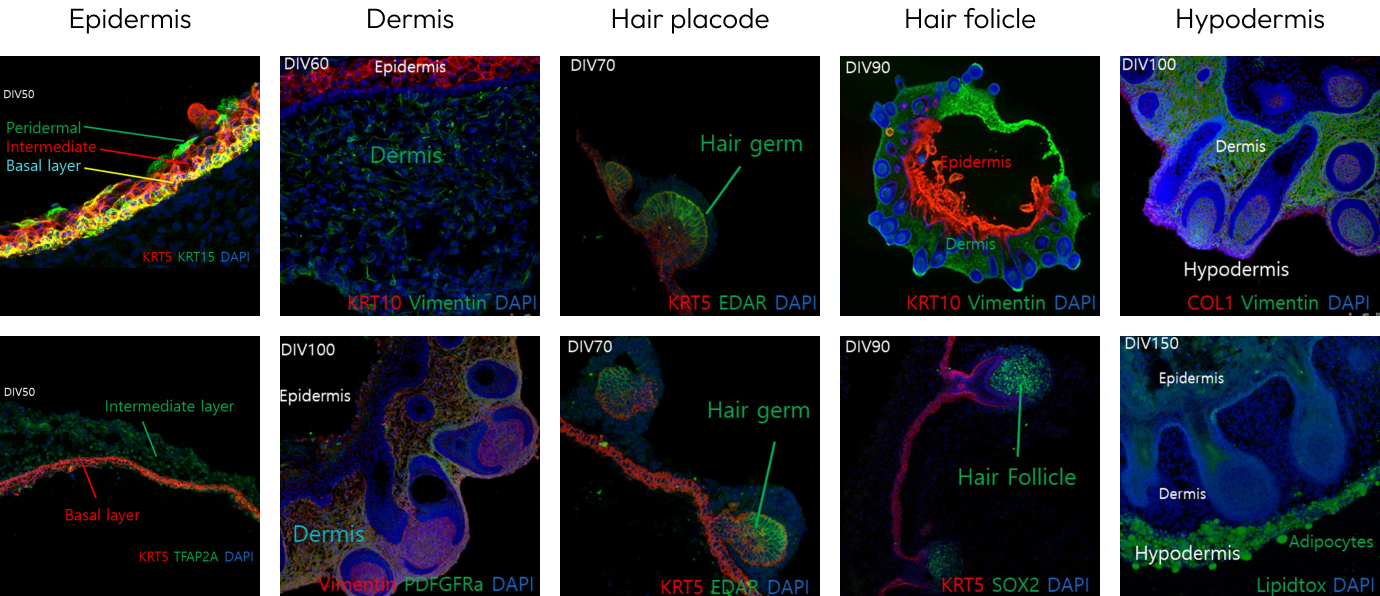

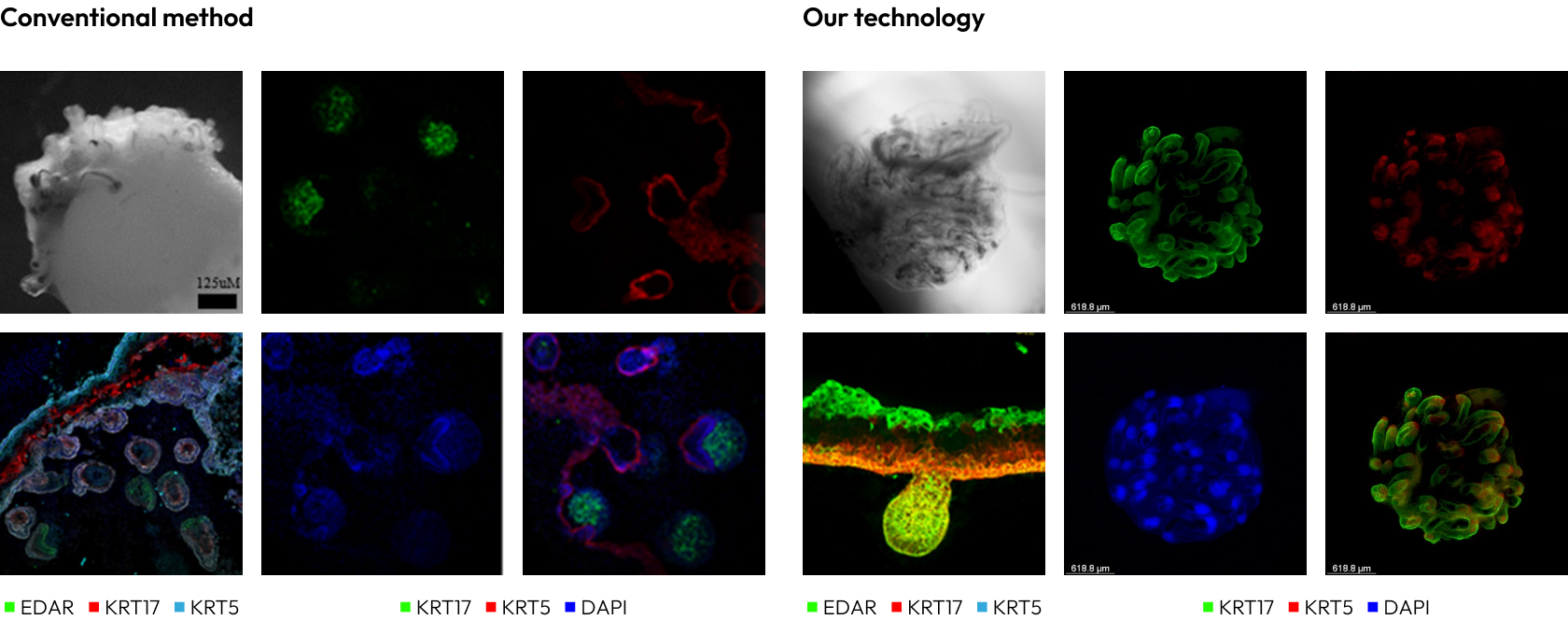

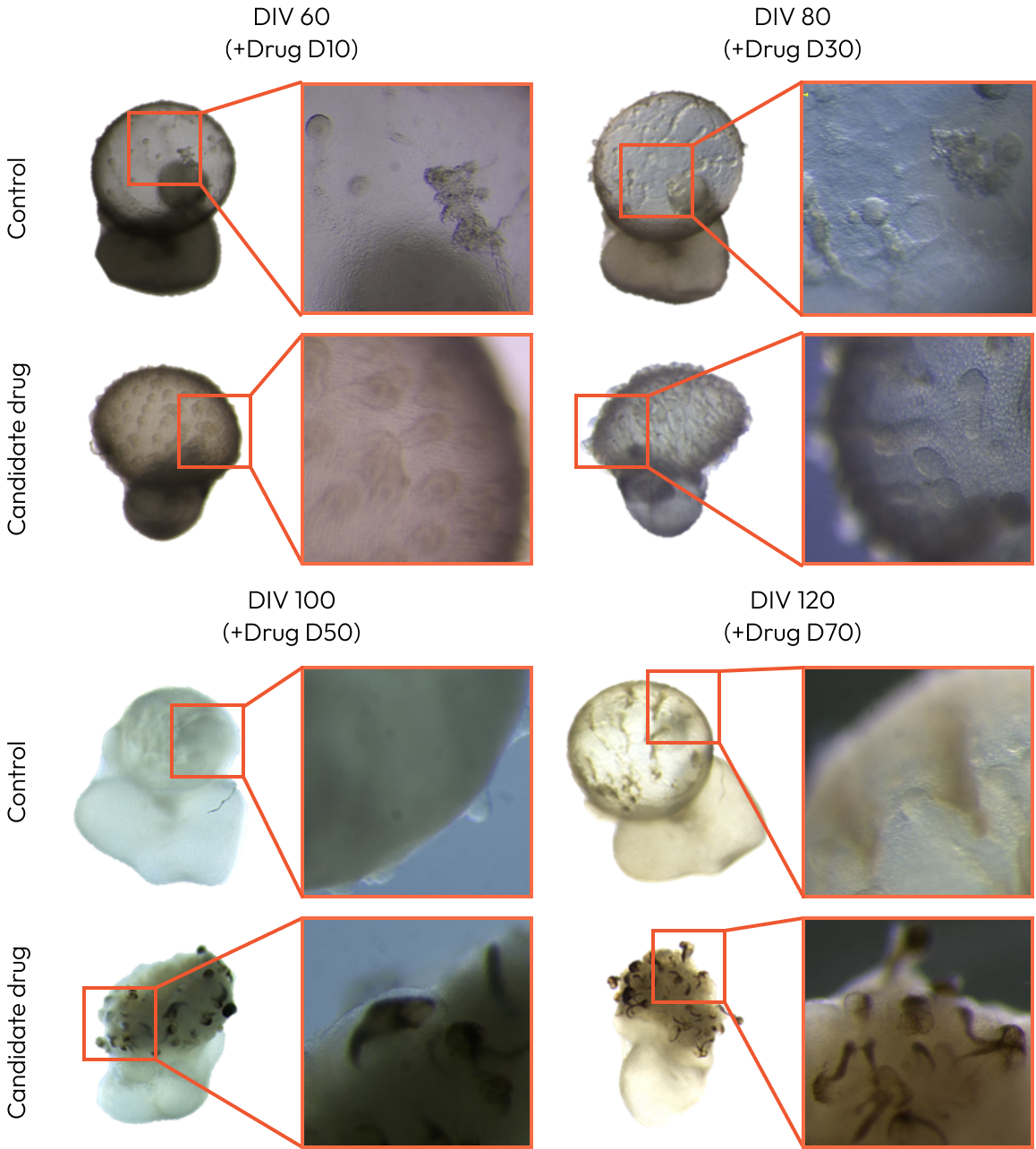
To create a hair loss model, we treated skin organoids with hair with the male hormone DHT to create a hair loss model.
It was confirmed that hair loss was suppressed by co-administration with Minoxidil, a known hair loss treatment, and was used to discover effective candidates.
